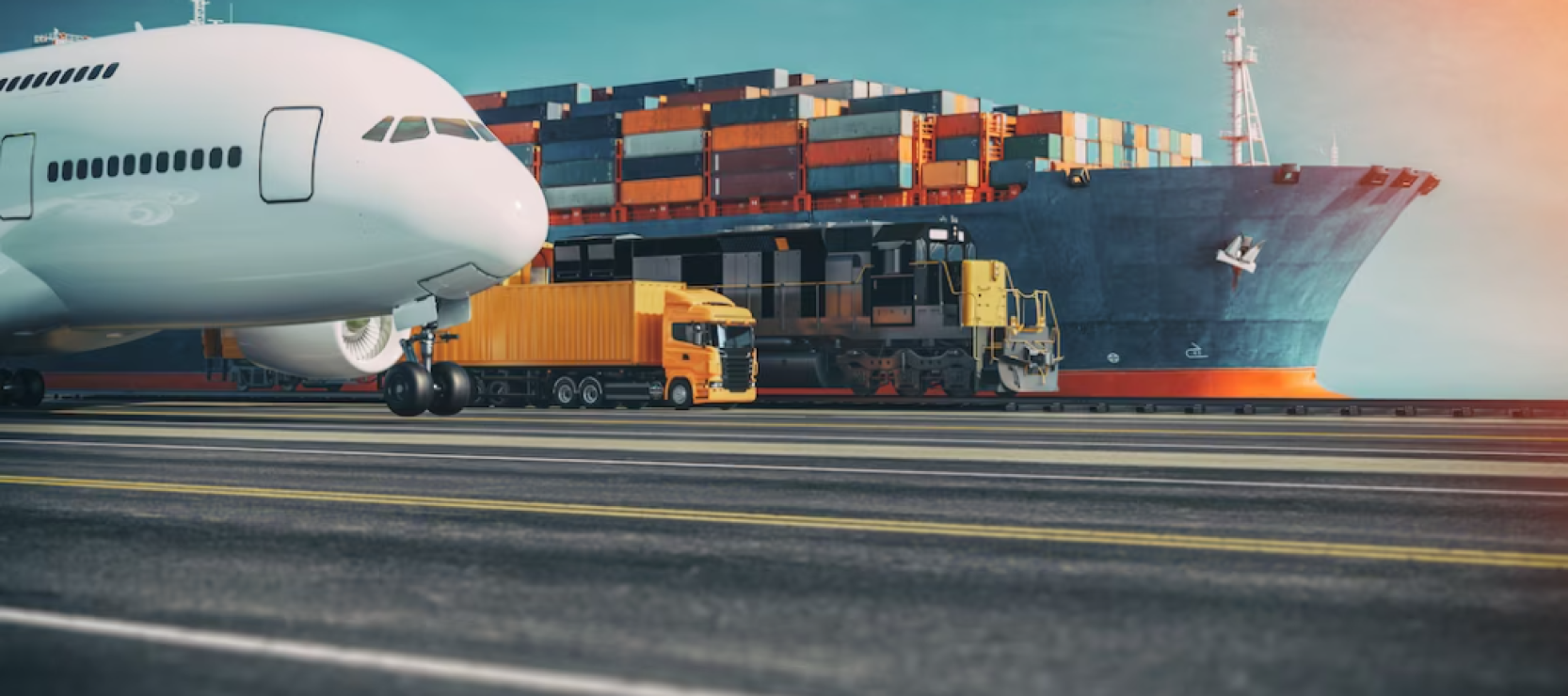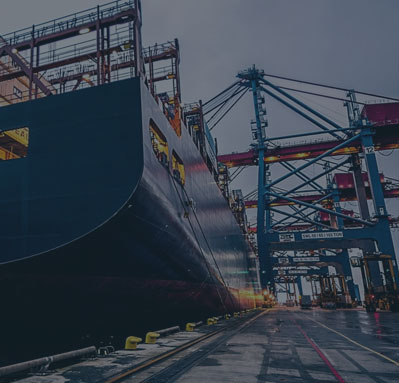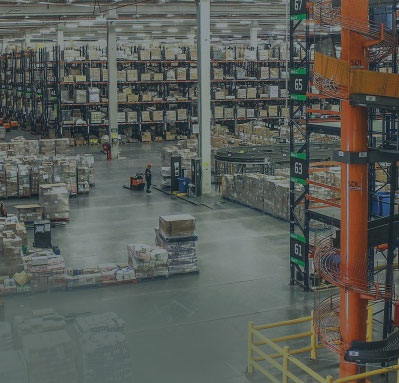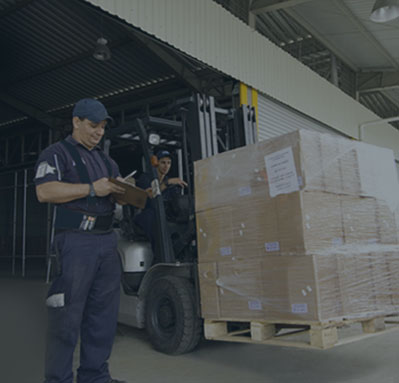When it comes to shipping methods, selecting the most cost-effective option is vital for businesses. In the dynamic landscape of 2024, it is essential to thoroughly assess factors like goods type, volume, delivery urgency, and potential delays to determine the cheapest shipping method. Our goal is to provide you with an in-depth analysis of various shipping methods, uncovering their advantages, disadvantages, and cost considerations. By exploring these factors, we aim to empower you with the knowledge to make informed decisions and identify the optimal shipping option that balances affordability and efficiency for your cargo.

Sea Freight: The Economical Option
Sea freight has long been associated with transporting goods and remains the most carbon-efficient mode of transportation. The international freight industry heavily relies on sea freight due to its minimal CO2 emissions. Unlike other modes of transportation, marine freight requires significantly less energy to move large volumes of cargo, making it an environmentally friendly choice.
In addition to its eco-friendliness, sea freight offers global reach. Although sea movements may be prone to delays caused by poor weather conditions, the extensive network of ports around the world ensures that cargo can reach almost any location. Sea freight is exceptionally cost-effective for all types of cargo, whether it’s packaged products, bulk shipments, or smaller volumes. Freight forwarders can utilize Groupage/LCL (Less than Container Load) services to share container space, providing affordable options for smaller shipments. Furthermore, the well-developed worldwide shipping network ensures reliable and efficient transportation for 90 percent of all goods.
However, it is important to note that the marine freight industry can experience challenges such as port congestion, shipping container shortages, and customs delays. Considering these factors, it is essential to explore alternative transportation modes to ensure a smooth shipping process.
Sea freight offers several cost benefits compared to other shipping methods:
- Economical Rates: Sea freight is generally more cost-effective than air or rail transportation, especially for large volumes and bulk shipments. The lower operational costs of sea vessels, combined with their ability to transport significant quantities of cargo in a single voyage, contribute to reduced shipping rates.
- Lower Fuel Costs: Sea freight consumes less fuel per unit of cargo compared to air freight or road transportation. As a result, the fuel costs associated with sea transportation are typically lower, which can result in significant savings, especially for long-distance shipments.
- Groupage/LCL Services: Sea freight provides the option of Groupage/LCL (Less than Container Load) services, where multiple shipments from different businesses are consolidated into a single container. This shared container space allows smaller businesses or shipments to benefit from cost sharing, making sea freight more affordable for smaller cargo volumes.
- Cost-Effective for Non-Urgent Shipments: If time is not a critical factor for your cargo, sea freight is an excellent choice. While sea transport may have longer transit times compared to air freight, it offers substantial cost savings. By planning ahead and allowing for longer lead times, businesses can significantly reduce shipping expenses.
- Reduced Customs Duties: Sea freight often involves a lower risk of customs inspections and associated duties compared to air freight. This can result in additional cost savings for businesses, particularly when shipping internationally.
- Scalability and Flexibility: Sea freight is highly scalable, making it suitable for businesses that require consistent shipping of large quantities. Additionally, sea routes are available to most major ports worldwide, providing businesses with extensive coverage and options for shipping destinations.
When considering cost benefits, it’s important to note that sea freight may incur additional costs such as handling fees at ports, documentation freight charges, and potential delays due to inclement weather or customs procedures. However, with proper planning and optimization of logistics processes, sea freight remains a cost-effective choice for many businesses.
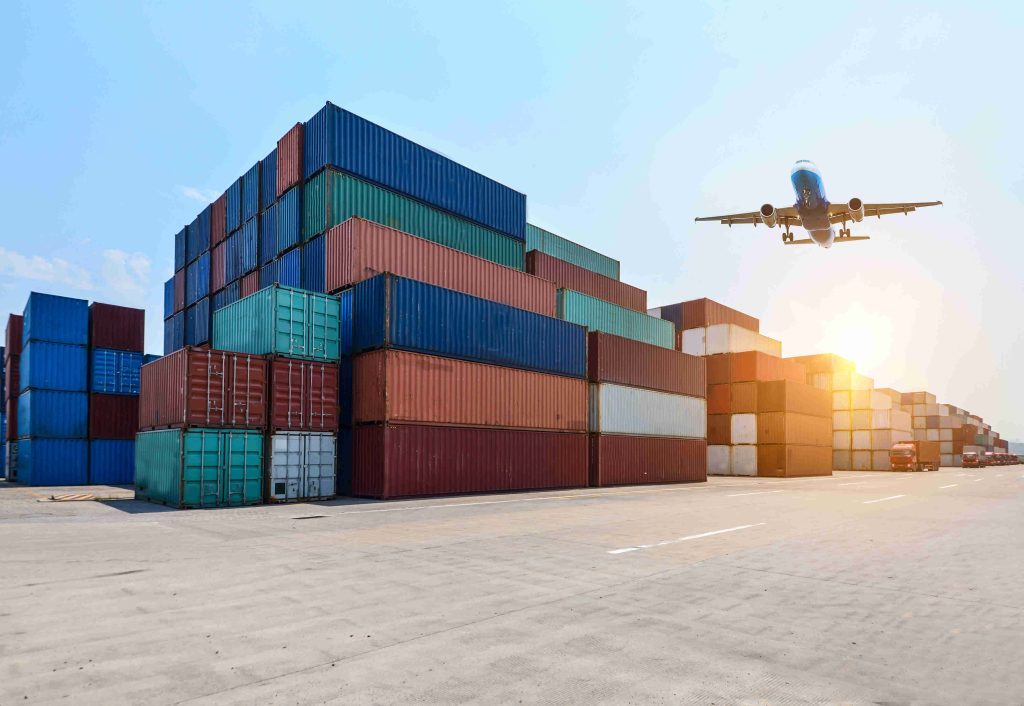
Air Freight: Speed and Minimum Risk
Air freight is widely recognized as the fastest mode of transport, making it ideal for time-sensitive, critical, and perishable cargo. Cargo planes travel at high speeds, typically around 900 kilometers per hour, ensuring swift delivery. Unlike other modes of transportation, air freight planes follow direct flight lines, minimizing the risk of traffic congestion and potential delays.
One of the major advantages of air freight is its minimum risk factor. Perishable products with a short shelf life and high-value commodities require strict security measures, making air freight the preferred choice. Additionally, flight routes can be quickly and easily altered in unfavorable weather conditions, reducing the likelihood of packaging damage during transit.
While air freight offers speed and reliability, it comes at a higher cost. Air freight is the most expensive mode of transportation due to factors such as higher fuel consumption, operating expenses, and limited cargo capacity. However, for small businesses shipping small cargo, air freight can still be the cheapest shipping method. It allows for the transportation of smaller items with minor price differences, offering a safer option for sensitive cargo.
Shipping via air freight offers several cost benefits that make it a viable option for certain types of cargo and businesses:
- Faster Transit Times: Air freight is the fastest mode of transportation, significantly reducing transit times compared to sea or rail freight. This speed can be advantageous for time-sensitive shipments, minimizing inventory holding costs and allowing for quicker order fulfillment.
- Lower Inventory Costs: The shorter transit times of air freight enable businesses to maintain lower inventory levels, as they can replenish stock quickly and respond promptly to customer demands. This can result in cost savings by reducing the need for excessive inventory storage.
- Reduced Warehousing Expenses: Due to the faster delivery times of air freight, businesses may require less warehouse space to store inventory. This can lead to cost savings on warehouse rent and operational expenses.
- Reduced Packaging Costs: Air freight generally involves shorter travel distances and less handling compared to other shipping methods. As a result, cargo transported by air is less prone to damage, reducing the need for extensive and expensive packaging materials.
- Increased Security and Insurance Costs: While air freight comes with higher transportation costs, it offers enhanced security measures and reduced risk of theft or damage. This can result in lower insurance premiums and potential savings in the long run.
- Ideal for High-Value Goods: Air freight is particularly suitable for shipping high-value and perishable goods that require strict security and temperature-controlled environments. The speed and reliability of air transportation minimize the risk of spoilage or damage, protecting the value of the cargo.
It is important to note that air freight is generally more expensive compared to other shipping modes due to factors such as higher fuel costs, limited cargo capacity, and operating expenses. It is essential to assess the specific needs of your cargo, including its value, urgency, and size, to determine whether the cost benefits of air freight outweigh the higher transportation costs.
By carefully analyzing your shipping requirements and considering the cost and value trade-offs, you can make an informed decision on whether air freight is the most cost-effective option for your business.

Rail Freight: Inexpensive and Reliable
Rail freight is an economical and reliable option, particularly for land transportation. It provides a cost-effective solution when the delivery route involves traveling across land. Rail freight offers several advantages, including reliability, eco-friendliness, and high-level security.
Reliability is crucial in the world of cargo shipping, and rail freight transit excels in meeting specified delivery dates. Trains are not significantly affected by weather conditions, and railway officials strictly manage capacity on the lines, ensuring minimal chances of congestion. Direct services to the destination are common, resulting in fewer stops and faster delivery times.
Rail freight transit is also an environmentally friendly choice. Operating on electricity, rail freight emits minimal CO2, making it greener than conventional modes of transportation for transporting heavy freight loads over long distances. This eco-friendliness is especially relevant as businesses increasingly seek sustainable shipping options.
Moreover, rail freight offers a high level of security for transported goods. Contrary to depictions in movies and historical stories, theft from cargo trains is rare. Railways and freight terminals are secure locations with low crime rates, ensuring the safe transportation of valuable products.
Shipping with rail freight offers several cost benefits for businesses:
- Lower Transportation Costs: Rail freight is often a more cost-effective option compared to road or air transportation, especially for long-distance shipments. Railways have lower fuel consumption per ton-mile than trucks, resulting in reduced transportation costs. This cost advantage becomes more prominent when shipping bulk or heavy cargo.
- Economies of Scale: Rail freight is ideal for transporting large volumes of cargo. Trains have a higher load capacity compared to trucks, allowing for the transportation of significant quantities in a single journey. This can result in economies of scale, reducing shipping costs per unit of cargo.
- Reduced Maintenance Costs: Rail freight requires less maintenance and has a longer lifespan compared to trucks. Railways have a longer operational life, reducing the need for frequent vehicle replacements. This can lead to cost savings in terms of maintenance, repairs, and fleet management for businesses engaged in regular shipping operations.
- Fuel Efficiency: Rail freight is more fuel-efficient than road transportation. Trains can move large volumes of cargo using less fuel per ton-mile, resulting in lower fuel costs. As fuel prices fluctuate, the fuel efficiency of rail freight becomes even more advantageous in reducing transportation expenses.
- Reduced Road-related Expenses: By choosing rail freight, businesses can reduce expenses associated with road transportation. This includes costs such as tolls, road taxes, and wear and tear on vehicles. Rail freight bypasses road congestion, eliminating the need to deal with traffic-related delays and potential associated costs.
- Cost Stability: Rail freight offers more stable pricing compared to other modes of transportation. While road transportation costs are subject to fuel price fluctuations and road tolls, rail freight prices tend to be more predictable and less susceptible to sudden increases.
Overall, shipping with rail freight can result in significant cost savings for businesses, particularly for long-distance shipments, bulk cargo, and regular shipping operations. By leveraging the cost benefits of rail freight, businesses can optimize their transportation expenses and improve overall operational efficiency.

Road Transportation: Essential and Convenient
Road transportation is the most common mode of transport, particularly for domestic deliveries. It plays an integral role in logistical operations, providing convenient and efficient services. With three-quarters of Europe’s interior freight being transported by road, it demonstrates the significance of this mode of transportation.
Road freight offers complete container load and Groupage/LCL services, similar to sea freight. This flexibility allows for the transportation of various cargo volumes. While road transportation may involve more contact points, the shared cost of containers/trailers can result in lower expenses for businesses.
Furthermore, road freight documentation requirements are typically simpler, especially for domestic shipments. This streamlined process, combined with the availability of numerous transport companies and vehicle options, ensures quick and efficient transportation for businesses.
Shipping with ground transportation, specifically road transportation, offers several cost benefits for businesses:
- Flexibility and Accessibility: Ground transportation, particularly road transportation, provides extensive coverage and accessibility to various locations, including remote areas where other modes of transportation may have limited reach. This accessibility reduces the need for additional transfer or handling costs associated with intermodal shipping.
- Cost-Effective for Short-Distance and Domestic Shipments: Road transportation is often the most cost-effective option for short-distance and domestic shipments. It eliminates the need for additional handling, transloading, or intermodal transfers, which can add expenses to the shipping process.
- Versatility in Cargo Size and Volume: Ground transportation allows for the transportation of a wide range of cargo sizes and volumes. Trucks come in various sizes, accommodating both small and large shipments. This versatility enables businesses to choose the most cost-effective option based on their specific cargo requirements.
- Shared Cost of Containers/Trailers: Road transportation offers the option of sharing containers or trailers, commonly known as less than truckload (LTL) services. This allows businesses with smaller cargo volumes to share the cost of transportation with other shippers, resulting in reduced shipping expenses.
- Efficient and Timely Deliveries: Road transportation provides direct delivery services, minimizing stops and enabling faster transit times compared to other modes of transportation. This efficiency can help businesses meet tight delivery schedules and reduce inventory holding costs by ensuring timely order fulfillment.
- Simplified Documentation: Road transportation often involves simpler documentation requirements, especially for domestic shipments. This streamlined process reduces administrative tasks and associated costs, saving businesses time and resources.
- Cost Savings on Warehousing: The faster transit times of road transportation can reduce the need for extensive warehousing and storage. Businesses can maintain lower inventory levels, leading to cost savings on warehousing expenses and reducing the risk of obsolescence or depreciation of goods.
- Competitive Market and Service Options: The ground transportation industry is highly competitive, with numerous transport companies offering a wide range of service options. This competition can lead to cost savings as businesses can compare rates and negotiate favorable shipping contracts.
It is important to consider factors such as fuel prices, tolls, and potential traffic congestion when assessing the cost benefits of ground transportation. By leveraging the advantages of ground transportation and optimizing logistics processes, businesses can achieve cost-effective shipping solutions for their specific needs.

Efficiency and Affordability: Reducing Shipping Costs with Cargoline
Selecting the cheapest shipping method in 2024 requires careful consideration of various factors, including cargo volume, type of goods, delivery urgency, and potential delays. Sea freight is generally regarded as the most cost-effective option, particularly for large packages and bulk shipments. However, air freight may be the cheapest shipping method for small businesses shipping small cargo due to its available capacity. Rail freight offers reliability, eco-friendliness, and security, making it an excellent choice for land transportation. Road transportation remains essential for domestic deliveries, providing convenience and efficient services. Lear more on how to choose the best freight forwarder for your business needs.
Ready to revolutionize your shipping and logistics operations in 2024? Cargoline is your ultimate solution! We specialize in reducing shipping costs and optimizing efficiency for businesses like yours. With our extensive network and industry expertise, we offer affordable and trackable shipping methods tailored to your cargo’s requirements. Whether it’s sea freight for large packages, air freight for time-sensitive goods, rail freight for land transportation, or road transportation for domestic deliveries, Cargoline has you covered.
Don’t let soaring shipping costs hold back your business growth. Take action today and reach out to our team to discuss your unique needs. Experience firsthand how Cargoline can help you save money, streamline operations, and propel your business forward. Let’s make 2024 the year of cost-effective shipping and unrivaled efficiency. Contact us now!
